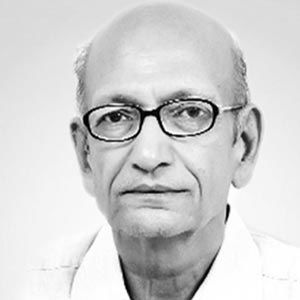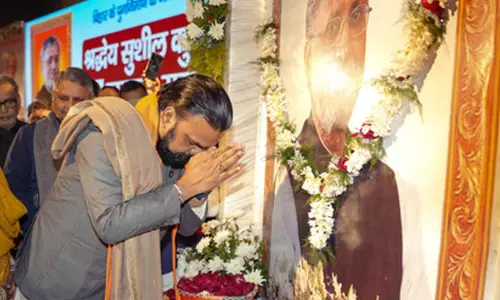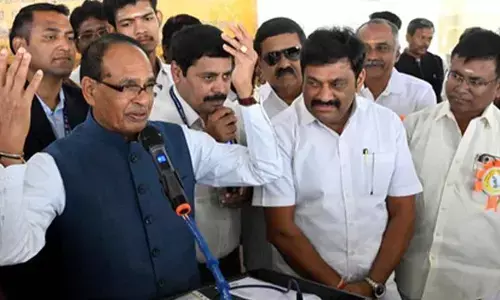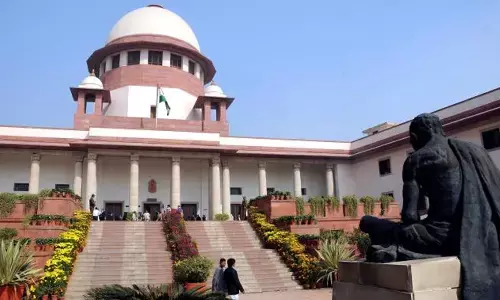Supply-side myth of raising demand

Nirmala Sitharaman
India has become the fastest growing economy in the world. Yet, the domestic demand is a problem.
India has become the fastest growing economy in the world. Yet, the domestic demand is a problem. The Reserve Bank of India has recently said the domestic demand is weak. The Punjab, Haryana and Delhi Chamber of Commerce and Industry has said that domestic consumption needs to be increased.
The Centre for Monitoring of Indian Economy has said that in 2019-20, the production declined by 6.2% while domestic consumption declined by 7.2%. There was a greater decline in consumption in comparison to production. The Asian Development Bank has said that the demand in the Indian economy is arising mainly from government administration and defence sectors, implying that the consumption demand from the people is weak.
A few contrary indicators are available, however. First, agricultural production has been buoyant but buoyancy in agricultural production is not the same as buoyancy in agricultural consumption. For example, we have produced a large amount of sugarcane and sugar and exported it. Therefore, agricultural production has increased but consumption of sugar has not increased. Second, GST collections are at an all-time high.
However, this does not mean that total production or consumption has increased. A number of observers have noted that we have created a zero-sum transfer from the informal to the formal sector. The reduction in production by the informal sector is equal to the increase in production in the formal sector.
For example, the reduction in numbers of street corner momo sellers and increase in the number of formal sector momo sellers in the malls can lead to increase in collection of GST while the consumption of momos in the economy may remain the same as previously. Third, electricity consumption has been noted. However, this, too, may be because of transfer of production from the informal to the formal sector. For example, the street corner momo producer does not use electric oven while as the momo producer in a mall uses an electricity oven.
Further, the use of electric cars instead of petrol-driven cars and similar substitution can lead to an increase in electricity consumption along with a reduction in oil consumption leading to stagnant total energy consumption. These indicators do not disprove the observations by Reserve Bank of India, PHD Chamber, CMIE and Asian Development Bank that the domestic consumption in the economy is weak. This is serious because increase in domestic consumption is necessary if we have to sustain our growth rate.
The government may consider two policies in order to stimulate domestic consumption. First is a supply side policy and the second is a demand side policy. It can try to reduce the price of goods in the market to stimulate demand in the supply side policy.
Let us say the supply of potatoes in the market declines. Then the consumers will buy more potatoes and less other vegetables. This will lead to an increase in demand of potatoes. Increased supply will be followed by increased demand. The balance between supply and demand will be reached at a lower price. The government can try to increase the demand for goods in the market and directly stimulate demand in the demand side policy.
If the demand for potatoes increases then the price will increase the farmers will bring in more quantity of potatoes. Increased demand will be followed by increased supply. Again, a balance will be reached but, now, at a higher price. Increase in consumption is obtained in both the policies.
The government has adopted the supply side policy. The Reserve Bank has made available loan to commercial banks at low rates of interest so that they can lend at low rates of interest. Thinking is that low rates of interest will lead to lower cost of production and increase consumption just as cheap potatoes may stimulate more demand for potatoes.
The government has implemented a "Production Linked Incentive Scheme" (PLIS) wherein industries are provided with financial incentive for increasing production. Thinking is that higher production will lead to lower cost of production and stimulate demand.
The danger in this supply side policy is that the demand may not actually be created. For example, a few years ago farmers of Palanpur in Gujarat had dumped their potatoes on the streets because there were no buyers for potato even at a price of Rs 3 per kg. The result is that the low price of a product does not ensure that a corresponding demand will arise.
On the other hand, a demand side approach is more solid. For example, the supply of face masks has increased dramatically after the Covid pandemic without low interest rates and PLIS incentives. Producers have found one way or the other to produce the goods since there is a demand. The difference between the "supply side" and the "demand side" approaches is that the supply side approach remains uncertain because it may or may not lead to creation of demand whereas the "demand side" approach is more assured because producers find one way or the other to produce the goods.
The government must change gears in 2022. It should consider ways of increasing demand in the economy. Needless to say, the basic objective of the economy is to increase domestic consumption. The welfare of the people is obtained directly if consumption is increased. It is of no use if the farmers produce more sugarcane the industries produce more sugar and it is exported for consumption of foreign people.
Two policies may be considered to increase demand. One, the entire government welfare bureaucracy is today acting as a middleman between the government and the recipient. The government should remove these middlemen from the welfare system and provide the money directly to the people just as the government is determined to remove the middlemen from the farmer's mandis. The people will be able to purchase the goods from the market with the Direct Cash Transfers and this will stimulate demand in the market.
The second policy to stem the outflow of our own capital. Anecdotal reports indicate that high net worth individuals from India are emigrating in large numbers. A number of Indian businessmen are putting factories in Vietnam or other countries, producing goods there and then importing them into India. There is a sense of fear in investing in India. So, the government should make a study of the reasons for outflow of Indian capital. My feeling is that the social tension is a major deterrent. The government must make investment attractive within the country.
(The author is former Professor of Economics at IIM, Bengaluru)
(The opinions expressed in this column are those of the writer. The facts and opinions expressed here do not reflect the views of The Hans India)










